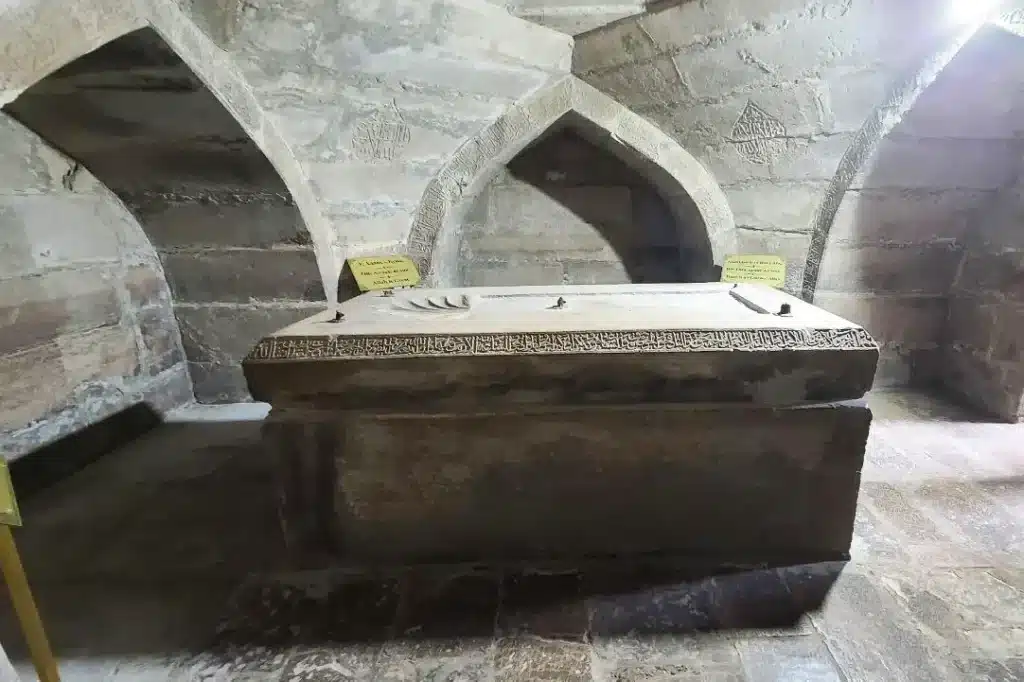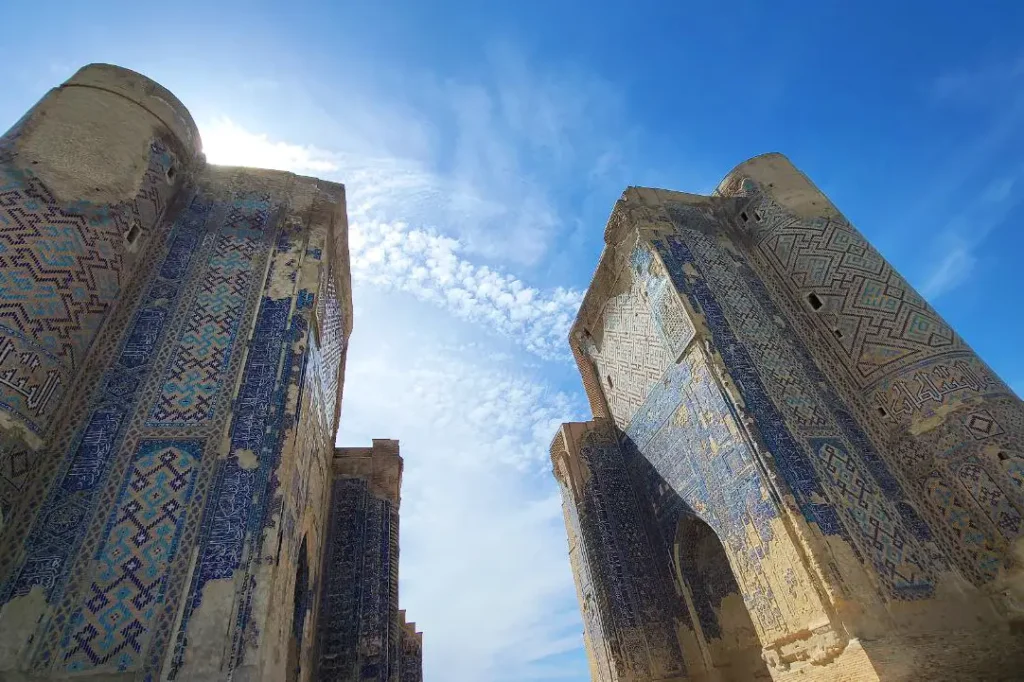Ak-Saray Palace – Royal Vision in Mosaic and Scale
Built by Timur to rival the heavens, Ak-Saray Palace was his most ambitious architectural project. Though only the towering entry portal remains today, its scale is breathtaking. The gateway, once part of a palace complex stretching 250 meters, is adorned with deep blue tilework and golden inscriptions proclaiming Timur’s might.
- Intricate mosaic tilework with Kufic inscriptions
- Surviving towers over 30 meters high
- Optical illusions used to emphasize grandeur
Travel Tip: Visit early in the morning for the best light and fewer crowds.
Dorus Saodat Complex – Spiritual Geometry and Resting Glory
Just a short walk from Ak-Saray lies the solemn Dorus Saodat Complex. Meaning “Repository of Power,” it houses the crypt of Timur’s son Jahangir and possibly Timur himself.
- Spiritual symmetry and geometric alignment
- White marble facades with minimal ornamentation
- Blends both mausoleum and madrasah architectural forms
Did you know? Unlike the more decorated Ak-Saray, this complex reflects the introspective spiritual side of Timurid architecture.
Chorsu Bazaar – Function Meets Civic Beauty
In the heart of the city lies the domed Chorsu Bazaar. Built in the 16th century, it exemplifies how architecture in Shahrisabz served both aesthetic and practical purposes.
- Central dome with symmetrical corridors
- Pointed arches framing merchants’ stalls
- Still an active marketplace – a living monument
Vernacular Homes and Hidden Khanakas – The Living City
Beyond the grand monuments, Shahrisabz’s backstreets are full of quiet wonders. Traditional Uzbek homes showcase adobe walls, timber columns, latticework, and shady courtyards.
- Climate-adapted techniques reflect local culture
- Explore Sufi khanakas hidden in residential neighborhoods
- Everyday architecture that’s still inhabited
Pro Tip: Ask your local guide to show you an operating khanaka or a traditional neighborhood teahouse.
Architectural Layers – Shahrisabz as a Cultural Palimpsest
Shahrisabz isn’t just a city—it’s a record of architectural evolution:
- Timurid era: Monumental scale and imperial vision
- Shaybanid and later periods: Bazaars and civic buildings
- Local vernacular: Earthy materials and community planning
These architectural layers show not only shifts in power but the continuity of cultural and architectural identity.









